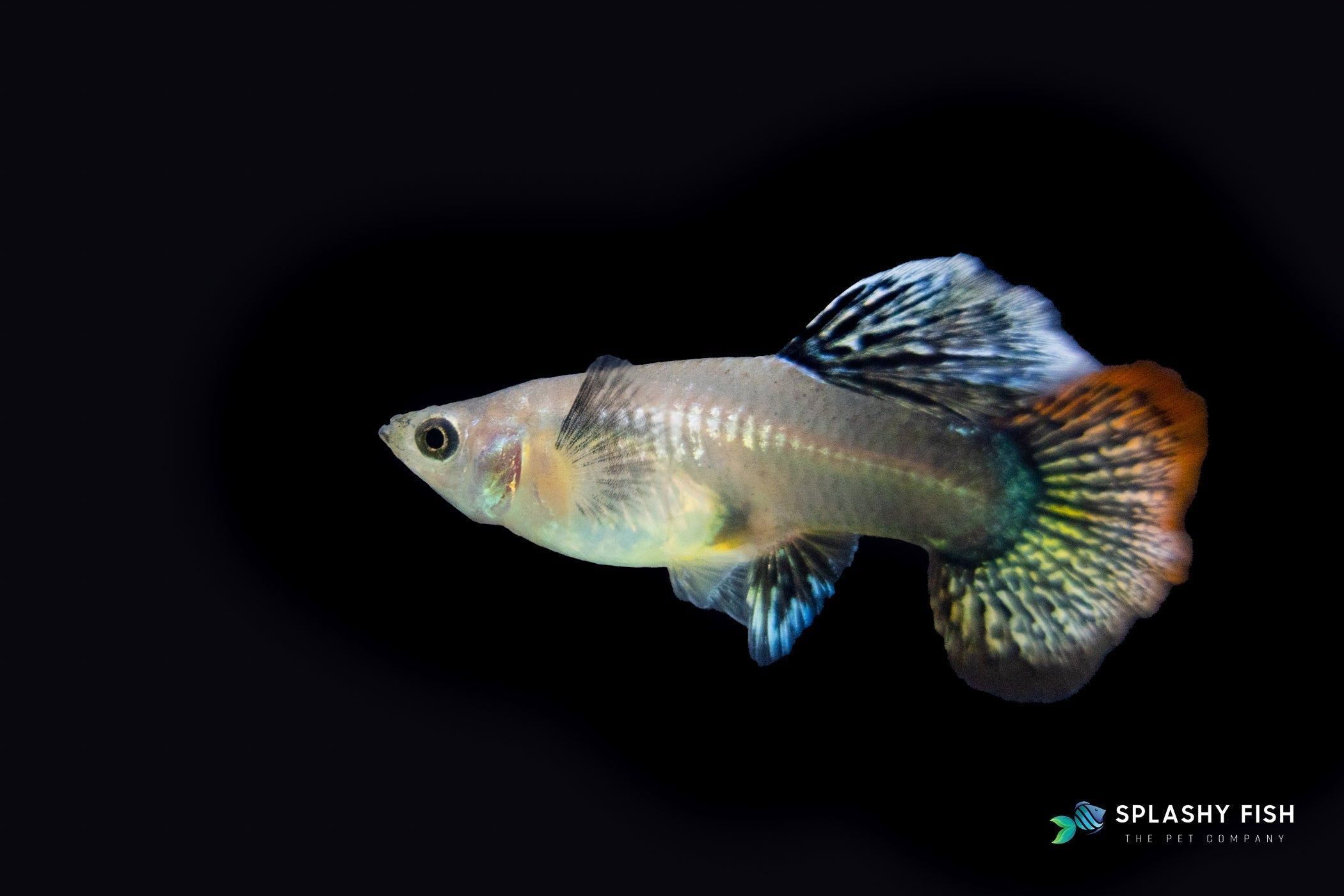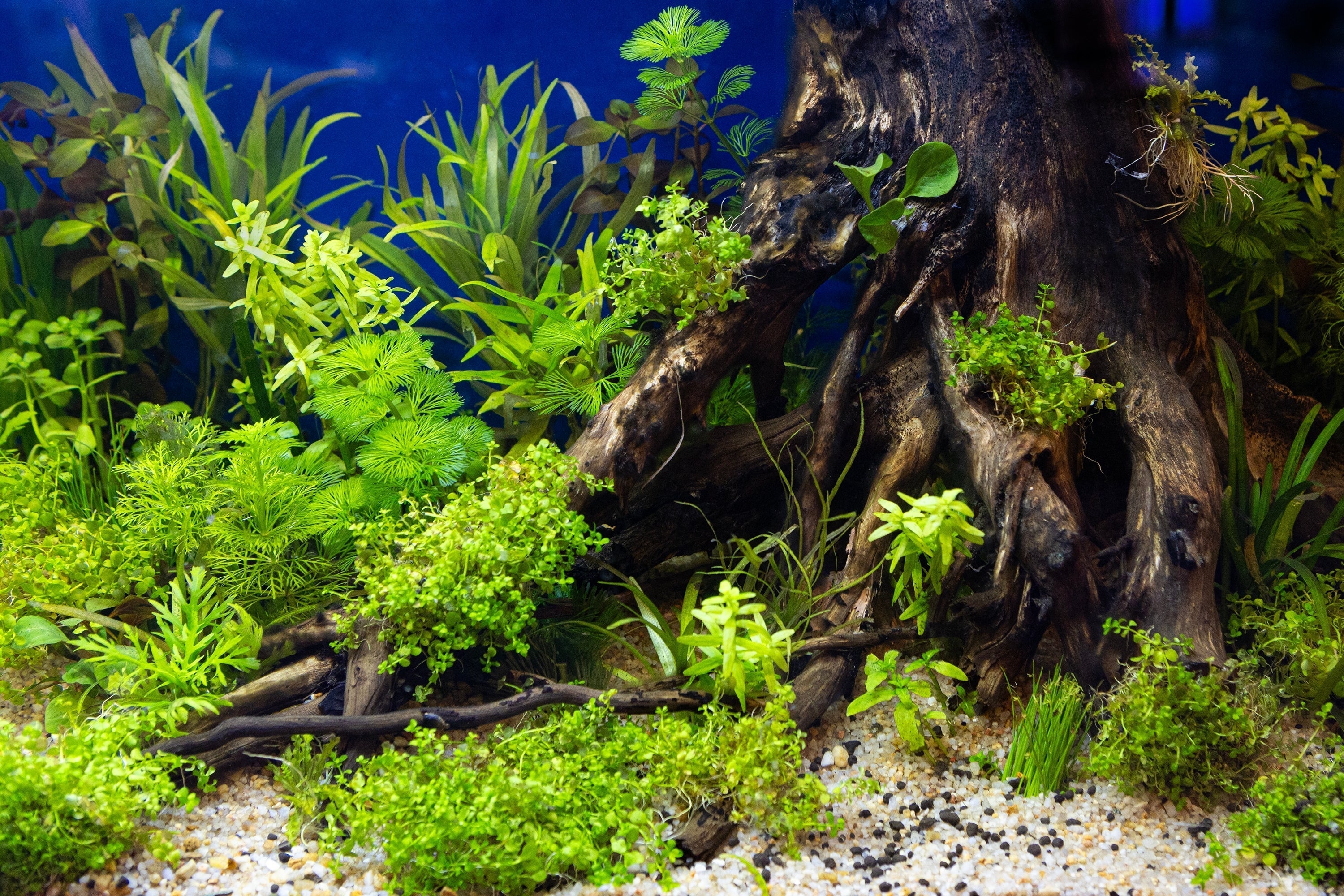Table of Contents
Guppy fish is one of the most common freshwater fish in the aquascaping world due to their ease of care and breed. They have a wide range of colors from white, yellow, and orange to black and blue. If you’re a beginner and looking for an easy species to breed, guppies are the best choice. Let’s figure out how to know if the female guppy is pregnant and how to care for them!
Signs of Guppy Fish Pregnant
The most obvious indicator of a pregnant guppy is the gradual enlargement of her abdomen. As her pregnancy progresses, you'll notice her belly becoming increasingly round and distended, much like a miniature balloon. However, other telltale signs can help you confirm her pregnancy with greater certainty:
- The Gravid Spot: Located near the female guppy's anal fin, the gravid spot is a dark area that changes in appearance throughout the pregnancy. Initially subtle, it darkens and becomes more pronounced as the gestation period advances. Towards the end, you might even be able to see the tiny eyes of the developing fry through the gravid spot, offering a captivating glimpse into the miracle of life unfolding within. This visual cue is one of the most reliable indicators of pregnancy in guppies.
- Behavioral Changes: Pregnant guppies often exhibit subtle changes in their behavior. They might become less active, opting to rest and conserve energy for the demanding process of gestation. Some females may also experience changes in appetite, either eating more to nourish their growing brood or becoming less interested in fish food as their abdomen fills. These behavioral shifts, while subtle, can provide valuable clues about a female's impending motherhood.
- The "Squaring Up" Phenomenon: As the pregnancy progresses, the female guppy's belly transforms, taking on a boxier shape. This "squaring up" is a result of the growing fry filling her abdominal cavity, a clear sign that she's nearing her due date. The change in body shape is often quite noticeable and can serve as a reliable indicator of advanced pregnancy.
- Seeking Solitude: Instinctually, a pregnant guppy might seek out secluded hiding spots within the aquarium, especially as her due date approaches. This behavior is a natural protective mechanism, providing her with a sense of security and shielding her vulnerable offspring from potential threats. If you notice your female guppy becoming more reclusive and seeking out hiding places, it's a strong indication that she's preparing for the arrival of her fry.

How Long is The Pregnant Guppy Fish Stages?
The gestation period for guppy fishes, such as koi guppy, the time between conception and birth, typically ranges from 21 to 30 days. Several factors can influence the precise duration, including the temperature of the water in your aquarium, the female guppy's age and overall health, and any stress she might be experiencing. A stable and optimal environment tends to cause a shorter gestation period, while stress or fluctuations in water parameters can extend it. Understanding this timeline is crucial for providing appropriate care and anticipating the arrival of the fry.
How to Care for Pregnant Guppy Fish
Providing exceptional care for a pregnant guppy is paramount for the well-being of both the mother and her developing fry. To ensure a successful pregnancy and healthy offspring, follow these essential steps:
- Optimal Nutrition: A high-quality, protein-rich diet is the cornerstone of a healthy pregnancy for guppies. Offer her a diverse menu of live or frozen foods like brine shrimp, daphnia, and bloodworms. These nutrient-dense options provide the building blocks necessary for the growth and development of her fry. You can also supplement her diet with a commercial flakes or pellet food formulated specifically for livebearers, ensuring she receives a balanced and complete nutritional intake.
- Pristine Water Conditions: Maintaining impeccable water quality within the aquarium is paramount. Regular water changes, meticulous testing for ammonia, nitrite, and nitrate levels, and ensuring appropriate temperature and pH are essential. A clean and stable environment minimizes stress for the pregnant guppy and fosters a healthy environment for her developing fry. Remember, water quality is the foundation of a thriving aquarium ecosystem.
- The Breeding Box or Net: While not always necessary, using a breeding box or net can offer a secure and secluded space for the female guppy to give birth. This can protect the delicate fry from being eaten by other tropical fish in the tank, including the mother herself, who might instinctively view them as food due to their small size and vulnerability. A breeding box or net provides a haven for the fry to grow and develop without the threat of predation.
- Minimizing Stress: Stress can negatively affect a pregnant guppy and her developing fry. Therefore, it's crucial to minimize stressors within the aquarium environment. Avoid sudden changes in water parameters, overcrowding the tank for guppies, and introducing aggressive guppy tank mates. Provide ample hiding places like lush aquatic plants, caves, and aquarium decoration where the pregnant guppy can retreat to feel safe and secure. A stress-free environment promotes a healthy pregnancy and ensures the well-being of both the mother and her offspring.

How Many Fry Do Guppies Have?
Guppies such as blue tarzan guppy are renowned for their prolific breeding habits, often producing large broods of offspring. A single female guppy can give birth to anywhere from 2 to 200 fry at a time! The number of fry varies depending on several factors, including the female's age, size, overall health, and previous breeding experience. Younger and smaller females typically have smaller broods, while older and larger females can produce a greater number of fry.
How to Care for the Guppy Fish Fry
The arrival of guppy fry is an exciting moment for any aquarist. These tiny, delicate creatures require special care and attention to ensure their survival and healthy development. Here's what you need to know to raise your guppy fry successfully:
- Separation: Whether you use a breeding box or not, it's crucial to separate the fry from adult guppies as soon as possible. Adult guppies, including the mother, may eat the fry if they aren't separated. A separate tank or a well-planted area within the main aquarium can serve as a haven for the fry, protecting them from predation and allowing them to grow without competition from larger fish.
- Feeding: Guppy fry have tiny mouths and require specialized food to thrive. Initially, feed them infusoria, a microscopic guppy food source that is readily available at most aquarium pet stores. As they grow, you can gradually introduce baby brine shrimp and finely crushed flake food to their diet. Frequent feeding is essential for their rapid growth and development.
- Frequent Water Changes: Guppy fry is particularly sensitive to water quality, especially ammonia and nitrite levels. To ensure their health and well-being, perform small, frequent water changes to maintain pristine conditions within their environment. This will help prevent the buildup of harmful substances that can impede their growth and development.
- Growing Tank: If you have a large number of fry or want to optimize their growth potential, consider setting up a dedicated growing fish tank for them. This allows them to grow and develop without competition from larger fish, ensuring they have access to ample food and space. A growing tank also provides you with greater control over their environment, allowing you to tailor conditions specifically for their needs.

Conclusion
Breeding guppies offers a captivating journey for aquarists, filled with the wonders of new life and the rewards of nurturing thriving offspring. By understanding the subtle signs of pregnancy, providing exceptional care for expectant mothers, and skillfully raising delicate fry, you unlock the secrets to successful breeding and contribute to the vibrant community of guppy enthusiasts. This process is not just a scientific endeavor; it's a testament to the beauty of nature and the interconnectedness of life within your aquarium. With patience, dedication, and the knowledge shared in this guide, you're ready to embark on your own guppy breeding adventure, witnessing the miracle of life unfold before your eyes and celebrating the joy of bringing new generations of these remarkable fish into the world.
Guppy Fish Pregnant Frequently Asked Questions (FAQs)
Are guppy fish aggressive?
Generally, guppies are peaceful fish. However, males can sometimes chase females, especially during mating. Overcrowding or lack of hiding spots can also lead to some aggression.
Do I need to separate the fry guppies?
Yes, separating the fry from adult guppies is essential to prevent them from being eaten. You can use a breeding box, net, or a separate tank.
Where to buy guppy fish online?
Guppies are readily available online from reputable breeders and pet stores. Or you can visit our Splashy Fish store for high-quality guppy fish for sale.



























